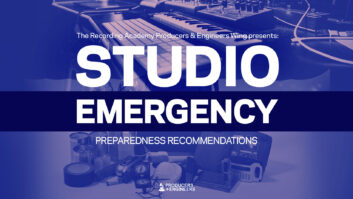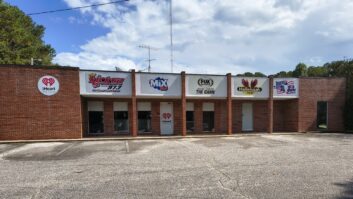Frank Foti thinks FM stereo can be improved, and he’ll share his idea of how to do it with the National Radio Systems Committee during the upcoming Radio Show convention.
According to NAB’s Radio TechCheck newsletter, Foti, head of processing manufacturer Omnia Audio, will talk about a way to improve the performance of conventional FM stereo transmission by modifying the L–R stereo subcarrier signal. He believes the approach also would reduce multipath and better protect the baseband spectrum, and would be compatible with existing radio receivers.

Foti earlier submitted a white paper discussing the approach, which uses single-sideband suppressed-carrier (SSB-SC) modulation of the stereophonic subcarrier in the FM multiplex baseband. The idea was influenced by a 1997 paper by William H. Gillman.
The graphic shown here is from Gillman’s paper; NAB engineers said it illustrates the concept: “The upper spectrum in this figure depicts a conventional baseband FM stereo spectrum, showing the double-sideband suppressed carrier (DSB-SC) L–R audio channel, centered at 38 kHz,” NAB wrote in its summary. “In the lower spectrum, the upper sideband of the L–R subcarrier is eliminated and the amplitude of the lower sideband is increased by 6 dB, to support the correct L+R/L–R matrixing in the receiver.”
Commission rules require DSB-SC modulation of the L–R channel, so the technique would require a rules change to be used widely.
In reply to followup questions, Foti told Radio World: “While working on our Omnia.11 project, it occurred to me that we finally had the MIPS to test the concept. So after testing and proving it works, I shared an informal white paper of my own with a friend, who passed it onto NAB. They’ve asked me to make this presentation at the NRSC meeting.” Foti said the feature is offered as a selectable parameter in the stereo generator of the Omnia.11 processor.
“I can tell you this, switching off the upper sideband of the FM stereo signal does not change the stereo sound field at all, when decoded back through a stereo radio. I had a demo of this running at IBC in Amsterdam, and everyone who heard it claimed they could not tell the difference when the decoded audio was DSB or SSB.”
He added as an aside: “Should the receiver industry get behind this, and rethink the stereo multiplexing method in their radios, there is a potential 4 dB improvement of signal-to-noise performance for stereo listening.”
NRSC also will hear presentations from the Internet Media Device Alliance and RadioDNS, both of which have been profiled in past recent issues of Radio World.
Related:
“Award-Winner: RadioDNS” (June 2010)
“IMDA Charts Course for Internet Radio” (Sept. 2010)







